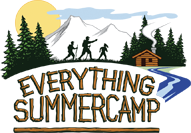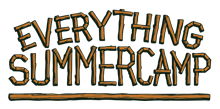Hey, Northerners!
North of the equator, that is…today is the Winter Solstice—a magical day of the year. This day is a reminder from Mother Nature of just how harsh and unforgiving she can be. That’s especially so this time of year the further north you go. We’re located in Northern Wisconsin here at Everything Summer Camp, where Winter Solstices are always cold, dark, and typically covered in ice and snow. But we only scratch the surface of winter brutality!

Some theorize that Stonehenge was built to establish when exactly the Solstices would occur.
This year, we’ll see just under nine hours of daylight in Boyd, Wisconsin (roughly the same amount as New York City). If you travel to Helsinki, Finland, you’ll be getting something shy of six hours of daylight! That’s less than a typical school or workday. And, even worse than that, if you go to Barrow, Alaska, you won’t even see a sunrise!
As you can imagine this cycle made our ancient ancestors pretty nervous with the concern that the sun would continue to grow more and more distant until one day it simply blipped out of sight completely. Without a better scientific understanding of the natural cycles of earth, this seemed like a perfectly reasonable concern.
In the heliocentric model, while the North Pole hadn’t seen a sunrise since October, the South Pole is being showered in nightly sunrays until March. Which is when things here in Northern Wisconsin will start to warm up; it’s time for the planet’s second winter solstice.
It’s easy to be“hemisphere-o-centric”—after all, the vast majority of people on the planet live in the northern hemisphere—but the other side of the planet certainly gets a winter solstice as well. Since Earth’s orbit is tilted on its axis the hemispheres trade off over the course of a year on which one sees direct sun. So,while we’re celebrating our Winter Solstice on December 21, folks south of the equator are seeing their Summer Solstice. They’ll get their Winter Solstice around June 21—when we get our Summer Solstice.
It can be hard to visualize just from reading about it, so I’ve included the most helpful visual I could find.Enjoy as many hours of dayligh t as you can today and stay nice and warm during the dark! As always, thanks for reading!
t as you can today and stay nice and warm during the dark! As always, thanks for reading!
- John



 , save kitchen and bathroom trips. Under most circumstances, I’d say this reaction is ridiculous…
, save kitchen and bathroom trips. Under most circumstances, I’d say this reaction is ridiculous… k and other supernatural ideas lends the notion that today truly is a perfect storm of unlucky signs: an unlucky day of the week falling on an unlucky date of the month in the unluckiest month of the year. It’s so bad that you may just want to take such ridiculous precautions like not leaving your home. I say, if it means avoiding something…unlucky…sign me up.
k and other supernatural ideas lends the notion that today truly is a perfect storm of unlucky signs: an unlucky day of the week falling on an unlucky date of the month in the unluckiest month of the year. It’s so bad that you may just want to take such ridiculous precautions like not leaving your home. I say, if it means avoiding something…unlucky…sign me up. material. In 1957, an engineer named Fielding and an inventor, Chavannes, put their minds together to create a textured wallpaper by sealing two shower curtains together, capturing air bubbles in-between.
material. In 1957, an engineer named Fielding and an inventor, Chavannes, put their minds together to create a textured wallpaper by sealing two shower curtains together, capturing air bubbles in-between. Bubble Wrap for delivering all our breakables to us in one piece, but our love for it doesn’t stop there. Its practical use may be over, but, now that its job is done, who can resist releasing all those trapped little pockets of air? Denver Boy Scouts know how fun popping bubble wrap can be! Just two years ago, they set a world record for Most People Popping Bubble Wrap at once—2681 Scouts. Way to go, fellas!
Bubble Wrap for delivering all our breakables to us in one piece, but our love for it doesn’t stop there. Its practical use may be over, but, now that its job is done, who can resist releasing all those trapped little pockets of air? Denver Boy Scouts know how fun popping bubble wrap can be! Just two years ago, they set a world record for Most People Popping Bubble Wrap at once—2681 Scouts. Way to go, fellas! There is much debate as to how penguins should be classified. Clearly, they’re one of the rare species of flightless birds like ostriches, emus, cassowaries, certain ducks, auks, and a few others. But they also have blubber which is mainly a mammal thing. They also spend the vast majority of their life underwater like a fish, but they walk around on land too, as amphibians do.
There is much debate as to how penguins should be classified. Clearly, they’re one of the rare species of flightless birds like ostriches, emus, cassowaries, certain ducks, auks, and a few others. But they also have blubber which is mainly a mammal thing. They also spend the vast majority of their life underwater like a fish, but they walk around on land too, as amphibians do.
